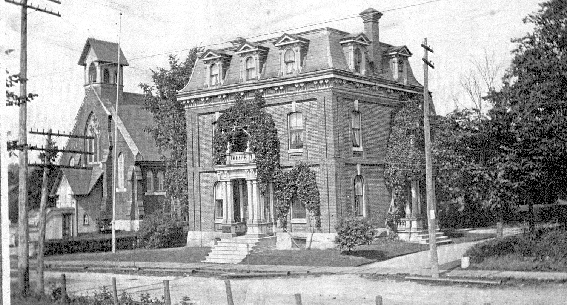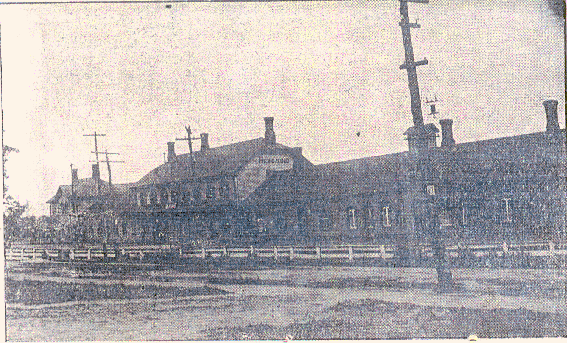History and Coat of Arms
The Town of Richmond owes its name to Sir Charles Gordon Lennox, 4th Duke of Richmond and Lennox (1764-1819), Chief Governor of the North American British in 1818-1819.
Richmond is located half way between Sherbrooke and Drummondville. The main access roads are Routes 116, 143, 243 and the AutoRoute 55 which connects Sherbrooke to Drummondville. The geographic location plays an important role in Richmond's history and development.
One of the oldest towns in the Eastern Townships

During the first 25 years, Richmond was just like all the other primitive areas. In 1811 Craig road was built and gave great importance at that time to Richmond.
The name 'Richmond' appeared for the first time on an authentic document dated 1822. It was on October 28th 1862 That Richmond was incorporated as a Village and a Mayor and Councillors were appointed on the 2nd of January 1863.
Richmond is one of the oldest Towns in the Eastern Townships. It was the main centre for farming and the rubber and plastic industry in Richmond. When it was incorporated in 1862, the Municipal assessment was $92 000 dollars.
The train as an economic lever

On July 1st 1853, the St. Lawrence and Atlantic Railroad Company prepared to build a railway from Longueil to Island Pond (Vermont), a distance of 142 miles (228 km). The section St-Hyacinthe-Richmond, 41 miles (66 km) was opened on October 20th 1852. The Québec-Richmond line was completed not long after, and Richmond became an important railway centre with a line leaving from Chicago to Toronto, and from Montreal to Portland.
An important railway centre, Richmond is 76 miles (122 km) from Montréal, 90 miles (145 km) from Québec and 221 miles (356 km) from Portland. At the end of the 1800's, Richmond had a Court house, two post offices, at least six stores, a print shop, a local paper, a foundry, four hotels and many people in different métiers, and about 86 residential houses. In 1908, the Municipal assessment was $579 045 dollars while the population was 2 500 persons.
Coat of Arms
The current Coat of Arms of the Ville de Richmond, were adopted by the Municipal Council in 2008.
The shield is divided into four parts, symbolising a cross road or a meeting place. The division lines also represent the railroad and the St-Francis River, two important transportations in Richmond's history. The main face of the Coat of Arms is made up of a clover, a rose, a fleur-de-lis and a thistle. Together, they form one, which represents the first habitants of the region. The four flowers are elements taken from the old Coat of Arms. They ensure a continuity of the emblematic heritage of Richmond.
The beaver symbolises the industry and the work the citizens have invested in their Town. It lies on a branch of green maple leaves, as it did during the many years on the old coat of arms.
The Latin sentence means «together we prosper»
The Herons are magnificent birds that can be spotted in our region. They show the rich natural heritage of this geographic location. They hold a maple leaf in their beaks to remind us of the maple branch on the crest.
![Ville-de-Richmond_vertical_web[1]](https://www.ville.richmond.qc.ca/wp-content/uploads/2018/04/Ville-de-Richmond_vertical_web1.gif)
